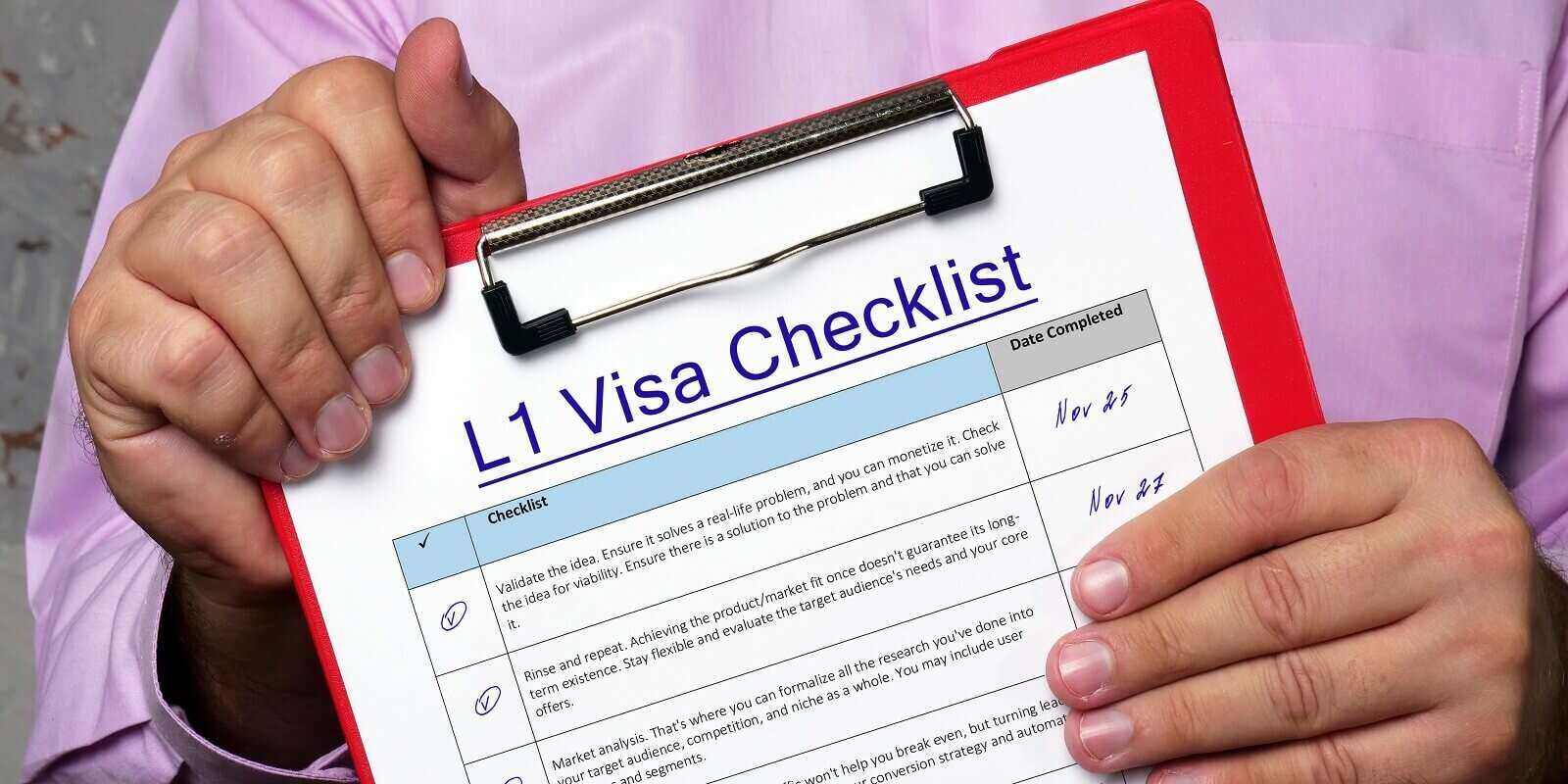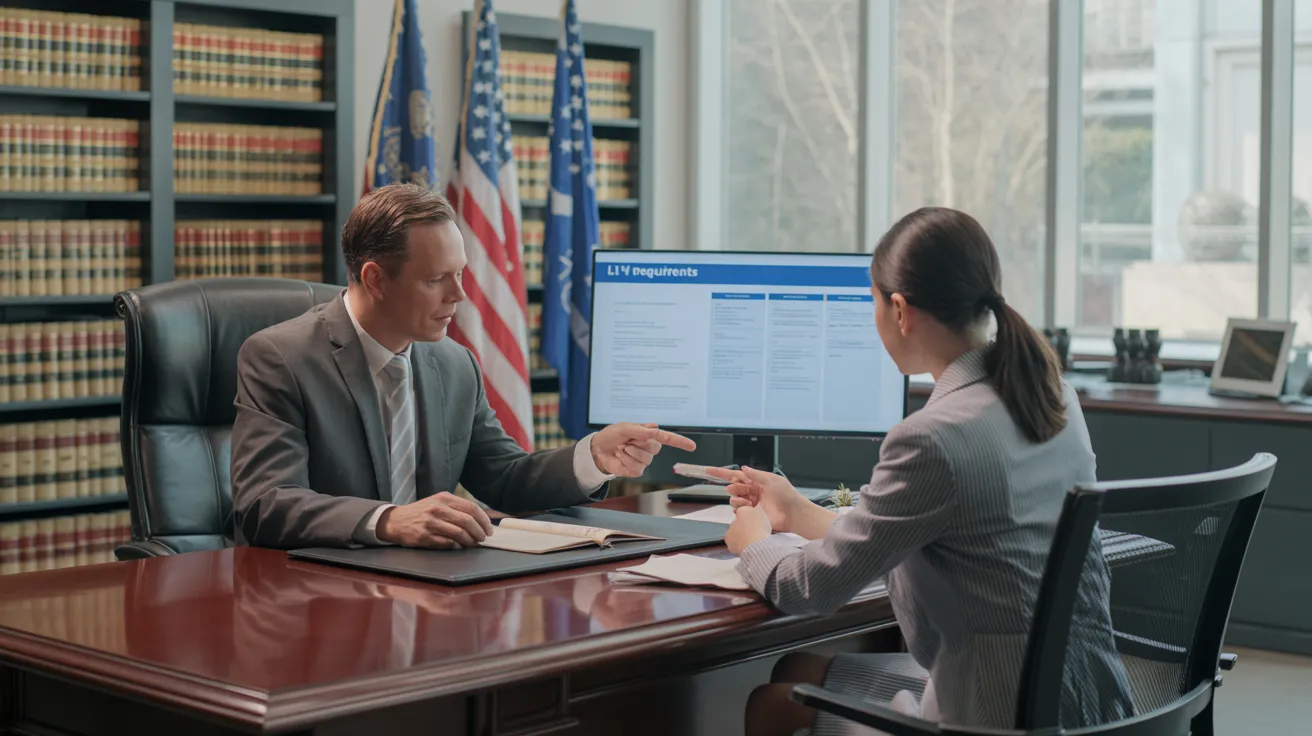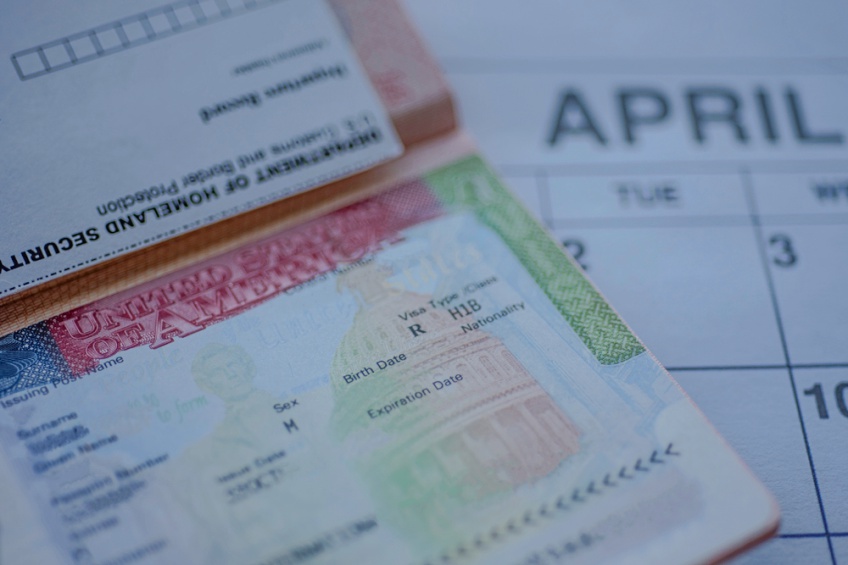Opening Opportunities: A Comprehensive Guide to the L1 Visa Process
The L1 visa process provides a critical path for international firms looking for to move essential employees throughout borders. Understanding the subtleties of qualification standards, the distinctions between L-1A and L-1B visas, and the intricacies of the application process can greatly influence an applicant's success. Nonetheless, steering this complicated landscape is not without its obstacles, and careful focus to paperwork and employer sponsorship is necessary. As we check out the vital components of this process, the methods for overcoming prospective barriers will certainly end up being obvious, exposing exactly how educated prep work can open up a globe of possibilities.
Comprehending the L1 Visa
Comprehending the L1 visa entails acknowledging its importance as a crucial tool for multinational companies seeking to move skilled staff members in between international offices. This non-immigrant visa group facilitates the movement of executives, supervisors, and specialized expertise employees to the United States, therefore making it possible for organizations to preserve functional connection and harness international ability effectively. The L1 visa is separated into two main categories: L-1A for supervisors and execs, and L-1B for employees having specialized knowledge.The L1 visa offers a critical role in improving a company's competitive side in the global market - L1 Visa. By enabling firms to move their essential workers, organizations can ensure that vital tasks are taken care of by qualified individuals who are currently familiar with the firm's culture and operational procedures. This internal transfer mechanism not only fosters knowledge sharing but additionally advertises advancement and partnership throughout borders.Moreover, the L1 visa is commonly favored for its reasonably uncomplicated application process contrasted to other visa categories, as it permits double intent, allowing holders to pursue irreversible residency while on a short-term job visa. This attribute makes the L1 visa especially appealing for both companies and staff members, as it enhances the pathway for proficient professionals to develop lasting residency in the United States
Qualification Requirements
Qualification for the L1 visa hinges on several crucial criteria that guarantee both the employee and the company satisfy specific certifications. This non-immigrant visa is designed for multinational business to transfer staff members from consular services to united state counterparts.Firstly, the company should be a qualifying company, that includes a parent firm, branch, affiliate, or subsidiary of a united state service. The business should have been doing company for a minimum of one year both in the U.S. and abroad. This ensures that the company has sufficient operational stability and a legitimate presence.Secondly, the staff member needs to hold a supervisory, exec, or specialized knowledge setting. For L1A visas, the candidate has to demonstrate supervisory or executive credentials, while L1B visas focus on specialized knowledge relevant to the company's products, solutions, or procedures. In addition, the staff member should have benefited the international entity for a minimum of one continuous year within the last three years before their application.Lastly, the staff member's duty in the united state need to line up with their previous setting, guaranteeing that their skills and expertise are leveraged for the company's advantage.
Sorts Of L1 Visas
The L1 visa category consists of 2 key kinds made to help with the transfer of workers within multinational business: the L1A visa for supervisors and execs, and the L1B visa for workers with specialized knowledge. Each kind offers distinct functions and has certain qualification criteria.The L1A visa is tailored for people that hold supervisory or executive positions within a company. This visa enables top-level workers to transfer to a united state branch, subsidiary, or associate of the exact same organization. Candidates for the L1A visa need to show that they have been employed in a supervisory or executive capacity for at least one constant year within the past 3 years before their application. In addition, this visa supplies a longer duration of stay, initially granted for three years, with the possibility of extensions for approximately seven years.In contrast, the L1B visa is meant for experts with specialized knowledge pertaining to the firm's items, solutions, or procedures. To certify, applicants should prove that their experience is essential to the company and that they have actually helped at the very least one continual year within the last 3 years in a role that required this specialized knowledge. The L1B visa is initially approved for three years, with extensions readily available for approximately five years.Both visa types are important for business seeking to boost their worldwide procedures by leveraging knowledgeable workers, therefore advertising development and efficiency within the united state market.
Application Process
Steering through the L1 copyright procedure involves several essential actions that should be meticulously complied with to guarantee an effective outcome. The process starts with the united state company, that have to initially develop eligibility by demonstrating a certifying relationship with the international entity and verifying that the worker fulfills the specific demands for the L1 visa group being sought.Once eligibility is verified, the employer launches the process by filing Form I-129, the Petition for a Nonimmigrant Employee, with the United State Citizenship and Migration Solutions (USCIS) This form should be gone along with by a detailed summary of the task responsibilities to be done, the business structure of both the united state and international entities, and the worker's credentials. It's important to confirm that all information is exact and complete, as noninclusions or mistakes can bring about delays or denials.Upon approval of the I-129 request, the following action entails the worker making an application for the L1 visa at a united state consular office or consulate in their home nation. This stage calls for the completion of Form DS-160, the Online Nonimmigrant copyright, and arranging a meeting. During the meeting, the candidate needs to provide proof sustaining their qualifications and the employer's petition.After the visa is granted, the worker can go into the United States to operate in the assigned duty. On the whole, careful preparation and adherence to each step of the application procedure are vital for an effective L1 visa end result.
Called for Documents

Vital Kinds Needed
Maneuvering the L1 Visa procedure calls for mindful interest to the crucial forms and documentation necessary for a successful application. The primary form required is the Form I-129, Request for a Nonimmigrant Worker, which should be completed and submitted by the united state company. This form describes the information of the employment offer and the credentials of the worker looking for the L1 Visa.Alongside Type I-129, the applicant will certainly require to complete Form I-539 if coming with relative are additionally making an application for visas. In addition, the employer needs to provide proof of the qualifying relationship in between the U.S. entity and the international entity, typically requiring the entry of business records such as write-ups of consolidation or economic statements.Moreover, it is important to consist of the L Classification Supplement to Kind I-129, which specifies the sort of L Visa being asked for-- either L-1A for supervisors and execs or L-1B for workers with specialized expertise. Finally, applicants need to guarantee that all types are authorized and dated suitably, as incomplete submissions can result in delays or denials. Correctly putting together these essential forms lays the structure for a smoother L1 copyright procedure.

Supporting Proof Requirements
Supporting documentation is important for a successful L1 copyright, as it substantiates the cases made in the application. Applicants must give a variety of files to show qualification for the visa, which is categorized into 2 primary kinds: evidence of the click here qualifying connection in between the U.S. and foreign entities and proof of the applicant's qualifications.To develop the connection, candidates must submit paperwork such as corporate business charts, monetary statements, and evidence of possession. These files verify that the foreign business has a qualifying relationship with the united state employer, whether as a parent firm, subsidiary, branch, or affiliate.For the applicant's certifications, important records include a comprehensive employment letter from the international employer, detailing the candidate's task title, responsibilities, and duration of work. Furthermore, instructional credentials, such as levels and diplomas, should be supplied to confirm the candidate's experience in the pertinent field.
Company Sponsorship Files

Common Obstacles
Navigating the L1 visa procedure provides numerous usual challenges that applicants need to recognize. Trick concerns usually include strict documents demands, prospective delays in processing times, and the need for strict lawful compliance. Comprehending these obstacles can assist candidates much better prepare and alleviate risks throughout their copyright trip.
Paperwork Requirements
The L1 copyright procedure usually offers significant obstacles related to paperwork demands. Candidates should supply extensive documents to develop qualification, which can bring about complication and prospective hold-ups. Trick documents include proof of a certifying connection in between the united state and international company, evidence of the candidate's employment history, and in-depth information regarding the task duty in the U.S.One usual obstacle is collecting enough proof to show the nature of the qualifying connection. Companies typically struggle to present clear business charts or financial statements that show the link in between the entities. In enhancement, ensuring that letters of assistance from companies accurately show the applicant's task obligations and credentials is vital, as unclear summaries can lead to denials.Another issue emerges from the need for detailed task summaries that align with the L1 visa categories. Candidates have to express not just their present role yet additionally their supervisory or specialized knowledge duties plainly. This requires a complete understanding of both the candidate's position and the regulatory language used in L1 applications.
Processing Dead Time
Experiencing hold-ups in handling times is an usual challenge faced by L1 visa applicants, typically leading to stress and unpredictability. Several variables add to these delays, consisting of high application volumes, raised scrutiny of applications, and administrative stockpiles within the U.S. Citizenship and Immigration Services (USCIS) Candidates might find that handling times can vary significantly relying on the service center managing their application, as each center has its very own work and performance levels. Additionally, the complexity of the candidate's case, such as the need for extensive documents or clarification, can additionally extend wait times.In some instances, issues connected to the applicant's present migration standing or previous visa history might additionally result in extra hold-ups, as USCIS may need more evaluation or details. It is important for prospects to stay positive throughout this period, preserving open communication with their employers and lawful reps to resolve any prospective problems promptly.Understanding these handling time difficulties can assist L1 visa applicants get ready for feasible hold-ups and reduce the influence on their shift and occupation strategies. Persistence and persistance are important merits in maneuvering this elaborate procedure.
Legal Conformity Issues
Numerous L1 visa applicants come across lawful compliance concerns that can complicate their journey toward obtaining the visa. Comprehending and adhering to the details policies set by the U.S. Citizenship and Immigration Services (USCIS) is vital. Usual difficulties consist of showing the certifying partnership in between the international and U.S. companies, along with confirming that the candidate possesses the requisite specific knowledge or managerial capacity.Additionally, applicants must give comprehensive documentation outlining their job responsibilities, corporate framework, and economic practicality of the united state entity. Poor or inaccurate documentation can result in delays or perhaps denials. Employers should also assure that they abide by labor regulations, consisting of wage and working condition criteria, which can affect visa eligibility.Another common problem involves keeping compliance with the regards to the visa as soon as granted. Changes in work condition, work duties, or business framework can necessitate changes to the visa, which otherwise resolved immediately can result in lawful problems. Because of this, remaining notified concerning compliance needs and seeking lawful counsel when essential is necessary to navigate the intricacies of the L1 visa process successfully.
Tips for Success
Success in the L1 copyright procedure typically depends upon precise preparation and focus to detail. To improve your opportunities of authorization, begin by completely understanding the eligibility needs for both the L1A and L1B visa classifications. Evaluate whether your placement at the company qualifies as managerial, executive, or specialized expertise, as this classification especially impacts your application.Next, gather comprehensive documents that confirms your insurance claims. This includes business charts, in-depth work summaries, and evidence of the firm's functional structure. Clear and concise proof of the certifying connection in between the U.S. entity and the international entity is essential. Confirm that all files are organized logically and presented in a specialist way, as this reflects your commitment and seriousness regarding the application.Engage the solutions of a knowledgeable migration attorney that concentrates on L1 visas. Their competence can verify invaluable, assisting you with facility regulations and ensuring that all documentation conforms with present regulations. Furthermore, prepare for the interview by practicing response to common questions and preparing to discuss your function and contributions to the company comprehensive.
Regularly Asked Inquiries
Can Family Members Accompany the L1 Visa Holder?
Yes, member of the family of L1 visa holders, consisting of partners and single youngsters under 21, can come with the main visa owner. They might likewise make an application for L2 visas, which allow them to stay in the United States.
Exactly How Long Can I Keep on an L1 Visa?
The L1 visa enables first keeps of up to 3 years, with the possibility of extension. L1A visa owners may remain for a maximum of seven years, while L1B visa holders can remain for 5 years.
Can L1 Visa Owners Look For an Environment-friendly Card?
Yes, L1 visa owners can make an application for a permit. L1 Visa Requirements. They may pursue long-term residency with employment-based categories, usually requiring sponsorship from their company, given they meet the essential credentials and documents requirements
What Takes place if My L1 copyright Is Rejected?
If your L1 copyright is rejected, you might receive a notice detailing the reasons for rejection. You can seek to appeal the decision, reapply, or explore alternate visa options based on your circumstances.
Are There Any Traveling Restrictions With an L1 Visa?
An L1 visa typically enables worldwide travel; nevertheless, re-entry to the united state is contingent upon keeping legitimate condition. Tourists should guarantee conformity with visa conditions to stay clear of problems upon return
Final thought
